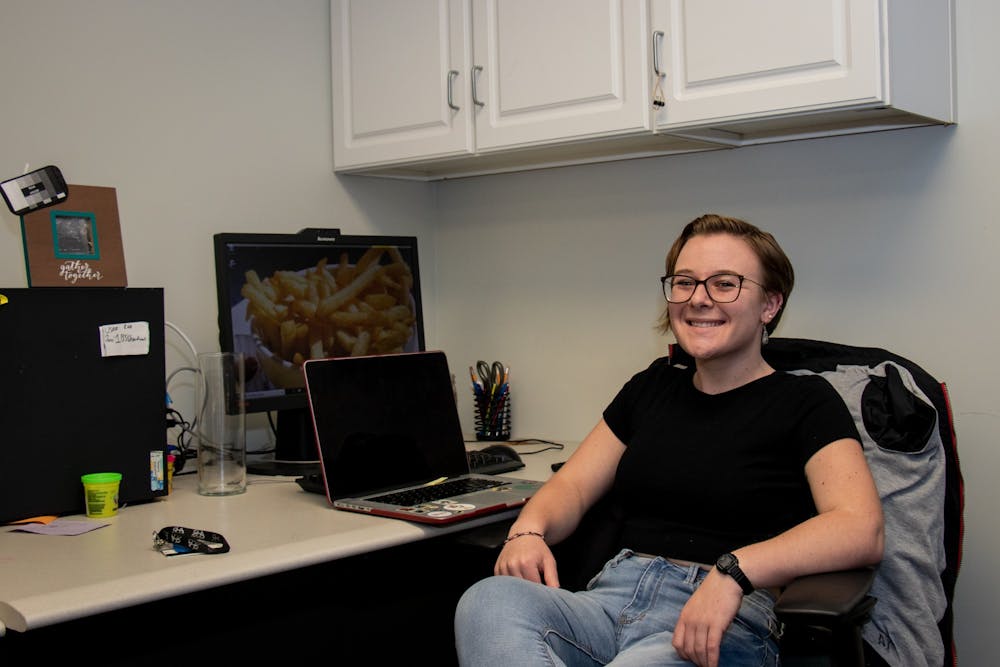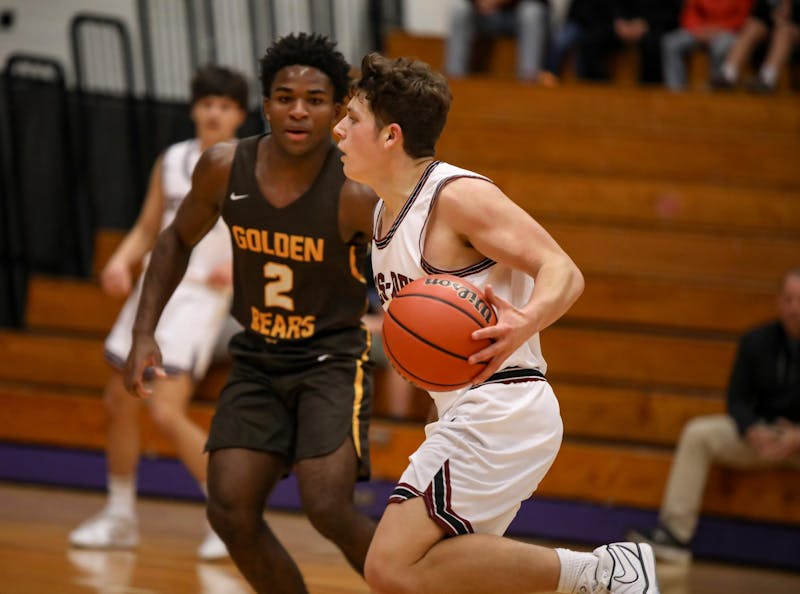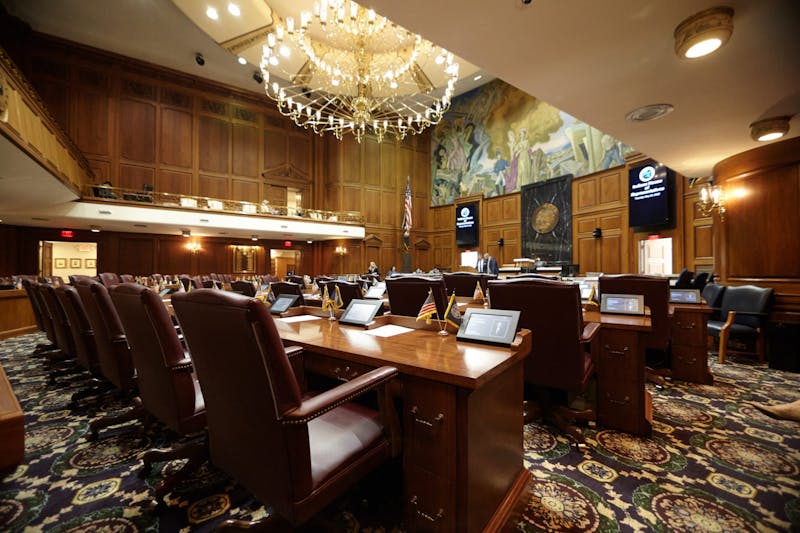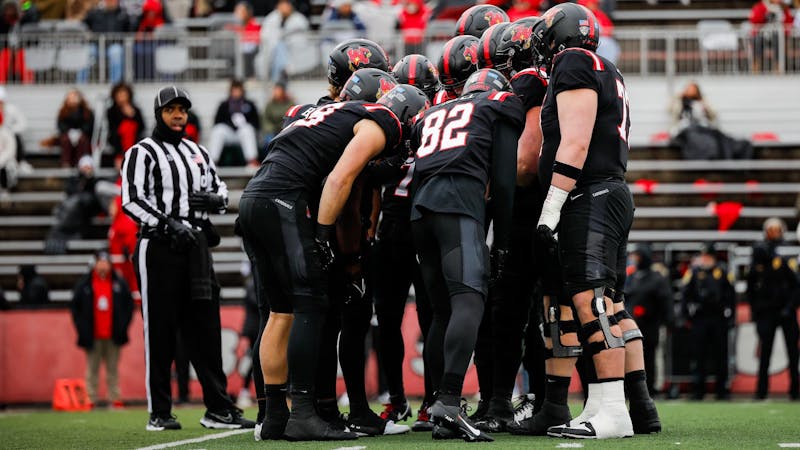Growing up in Fremont, Indiana, senior biology education major Jackie Weisenfelder said she experienced a “shift in community” when she came to Ball State.
“Muncie felt huge,” Weisenfelder said. “I have lived in [DeHority Complex] all four years of college now, and there are more people in my residence hall than were in my entire high school.”
As Weisenfelder adjusted to campus life during her freshman year, she said, she struggled to find a community that felt like the right fit for her. Because of this, she didn’t get involved and “shortchanged” herself.
The next year, however, Weisenfelder decided to “push the boundaries” of her comfort zone and became a mentor in Ball State’s summer program Accelerate. During that time, she met the then-president of the Residence Hall Association (RHA).
When the president tapped Weisenfelder on the shoulder and suggested she apply for one of the openings on the RHA’s executive board, Weisenfelder decided to once again expand her comfort zone.
What is the Residence Hall Association?
The Residence Hall Association is an organization made up of students who live on campus. The group “works to provide a representative voice for all residents, unify and improve the on-campus living experience and collaborate with other campus organizations,” according to its Benny Link page.
Throughout the year, the RHA holds a variety of different events, including “Holiday Bash,” “Ball State Bash” and “Chirp Factor,” which are open to all Ball State students — not just those who live on campus. The organization also holds general assembly meetings at 5 p.m. Thursdays, which are also open for any student to attend and voice their concerns or ideas.
Jackie Weisenfelder, president of the organization, said the RHA also works with other campus organizations to further their understanding of what students’ needs are and respond accordingly — whether that means working with the Office of Housing and Residence Life or the Student Government Association to incite changes on campus or holding events.
“I wanted that sense of belonging — I wanted to feel like there was a spot for me to make something of myself,” Weisenfelder said. “Even if something is scary for me personally, I don’t want fear to hold me back from making decisions. We jump to the conclusion like, ‘What if this decision is a bad decision?’ but we don’t often think that there is an equal chance that there is a good decision.
“I was like, ‘If I don’t get that, I’m not going to feel comfortable at Ball State. I’m not going to feel like I want to be here anymore,’ and I really, really wanted that.”
After Weisenfelder filled out an application, presented to the RHA why she felt she would be a good fit for the position and interviewed with members of the organization’s executive board, Weisenfelder was offered the position of vice president of administration.
Not long after taking on her new position, Weisenfelder said, she knew she had found the sense of community she was looking for.
Now, she is the president of the RHA and works alongside other members to host events and help students feel like they, too, are part of a community that fits their needs.
“We represent 6,000 students — everyone who lives on campus. We advocate for what students want, [and] we provide programs to help make Ball State feel like home,” Weisenfelder said. “If you are going to school here for four years, this could just be a place you pass through on your way to somewhere new — whether that’s grad school, a job, professional life, whatever — or if you are here at Ball State for a year and then you transfer, we still want that experience to be a positive one.
“We don’t want Ball State and Muncie to just be a place you pass through. We want it to be an important part of your story, like the pin on the map.”
Like Weisenfelder, Parker Gray, sophomore political science major and vice president of programming for the RHA, said the community aspect is one of his favorite things about the organization.
“When you’re at a university, you really are out on your own for the first time, and you are in a point in your life when you are trying to find a sense of belonging,” Gray said. “What we try to do [at the RHA] is create spaces, events and other ways in which people can connect and feel more at home at Ball State.”
Beyond its eight-member executive board and four advisors, the RHA has representatives from each residence hall who are part of both the RHA and their respective hall’s councils. RHA also has three committees — public relations, activities and issues and facilities — and open meetings so students can voice their concerns or ideas.
Weisenfelder said this approach has allowed the RHA to respond to a wide variety of issues students notice on campus and has led the group to take action on topics from gender-inclusive housing to the lack of cell service in the DeHority Complex’s lobby.
“We help serve as a go-between, too, because housing and residence life is big, and it can seem really intimidating to a student who has a concern,” Weisenfelder said. “We help to kind of point them in the right direction.”
Weisenfelder said an important part of making students’ voices heard is allowing a diverse group of people to raise their voice — which is part of the reason why the RHA tries to gauge the needs of all students on campus, not just those who live in the residence halls, by working with the Student Government Association. This also added to the organization’s decision to not allow members to be Resident Assistants (RAs).
“One of the things that we have really discussed is that RAs already get the opportunity to voice their own concerns and voice concerns of people that they work with — their residents — and we wanted to hold the microphone to someone else so just ‘regular students’ could have the opportunity to also get involved,” Weisenfelder said.
As the organization gains more notoriety, Gray said, more and more people are able to come forward. He added the RHA has helped him gain “a larger field of view on what people actually want to see on campus.”
He and Garrett McCracken, vice president of administration for RHA, said this collaborative aspect of the RHA is one of its strengths.
“I think what I enjoy most about RHA is that we bring all of these communities together to make ideas, [and] continue to come up with new things that we can bring to Ball State with a fresh perspective, and that’s something that as a person I really enjoy seeing,” McCracken said.
The junior psychology studies major said he was first introduced to the organization through its partnership with another group he was involved with.
McCracken attended a few RHA meetings and said he was quickly persuaded “to give back to RHA because I saw how much it was giving to the housing community that I live in.”
From his first introduction to the RHA, he said he felt “it was a very inclusive environment” that “no matter who came in those doors, anybody could feel like they had a part in that meeting.”
Like Weisenfelder, McCracken said if he didn’t get involved in the RHA, there is no way he would be as involved on campus as he is now.
While McCracken and Weisenfelder have been involved for different lengths of time, they both said they enjoy watching the change in new members as they learn the ropes of the organization and grow as individuals.
“I think, as a senior, my favorite part right now is being able to see all of the people I work with grow and sort of have those small self-realizations that I’ve had over the years,” Weisenfelder said. “Being able to have those ‘ah-ha’ moments where they realize, ‘Oh, I can do this,’ and seeing people come to our programs and leave really excited and really happy — for me, that fills my cup every single time.”
Contact Brooke Kemp with comments at bmkemp@bsu.edu or on Twitter @brookemkemp.





The Daily News welcomes thoughtful discussion on all of our stories, but please keep comments civil and on-topic. Read our full guidelines here.